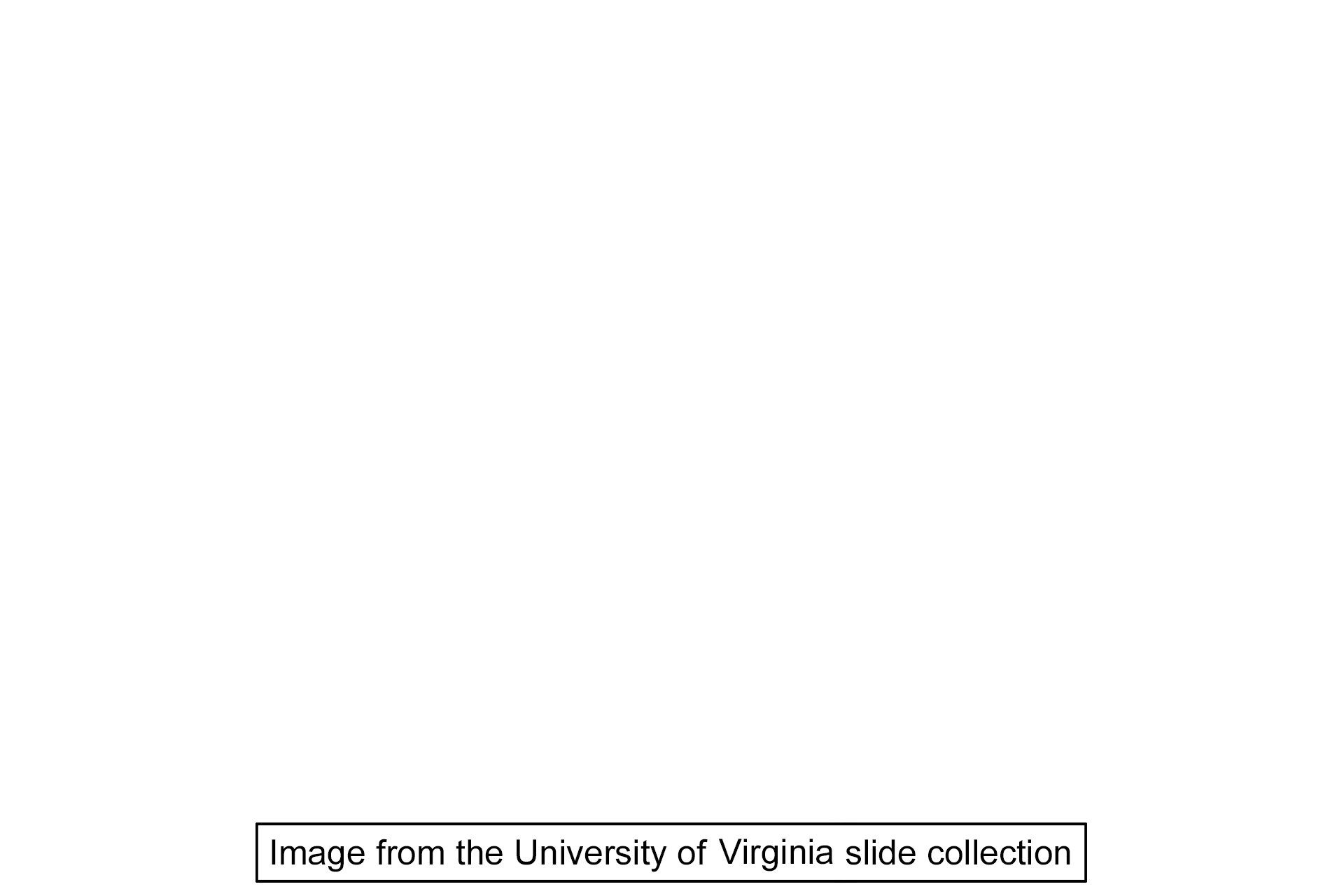
Seminiferous tubules - convoluted portion
Primary spermatocytes, the largest cells in the spermatogenic lineage, form from mitotic division of spermatogonia in the basal compartment. Primaries migrate through the blood-testis barrier and enter a prolonged period of prophase of meiosis I. Primary spermatocytes complete meiosis I, the reductional phase, to produce haploid secondary spermatocytes. 1000x

Spermatogonia
Primary spermatocytes, the largest cells in the spermatogenic lineage, form from mitotic division of spermatogonia in the basal compartment. Primaries migrate through the blood-testis barrier and enter a prolonged period of prophase of meiosis I. Primary spermatocytes complete meiosis I, the reductional phase, to produce haploid secondary spermatocytes. 1000x

Primary spermatocytes in prophase
Primary spermatocytes, the largest cells in the spermatogenic lineage, form from mitotic division of spermatogonia in the basal compartment. Primaries migrate through the blood-testis barrier and enter a prolonged period of prophase of meiosis I. Primary spermatocytes complete meiosis I, the reductional phase, to produce haploid secondary spermatocytes. 1000x

Primary spermatocytes in metaphase
Primary spermatocytes, the largest cells in the spermatogenic lineage, form from mitotic division of spermatogonia in the basal compartment. Primaries migrate through the blood-testis barrier and enter a prolonged period of prophase of meiosis I. Primary spermatocytes complete meiosis I, the reductional phase, to produce haploid secondary spermatocytes. 1000x

- Mitotic spindle
Primary spermatocytes, the largest cells in the spermatogenic lineage, form from mitotic division of spermatogonia in the basal compartment. Primaries migrate through the blood-testis barrier and enter a prolonged period of prophase of meiosis I. Primary spermatocytes complete meiosis I, the reductional phase, to produce haploid secondary spermatocytes. 1000x

Early spermatids
Primary spermatocytes, the largest cells in the spermatogenic lineage, form from mitotic division of spermatogonia in the basal compartment. Primaries migrate through the blood-testis barrier and enter a prolonged period of prophase of meiosis I. Primary spermatocytes complete meiosis I, the reductional phase, to produce haploid secondary spermatocytes. 1000x

Late spermatids
Primary spermatocytes, the largest cells in the spermatogenic lineage, form from mitotic division of spermatogonia in the basal compartment. Primaries migrate through the blood-testis barrier and enter a prolonged period of prophase of meiosis I. Primary spermatocytes complete meiosis I, the reductional phase, to produce haploid secondary spermatocytes. 1000x

Sertoli cells
Primary spermatocytes, the largest cells in the spermatogenic lineage, form from mitotic division of spermatogonia in the basal compartment. Primaries migrate through the blood-testis barrier and enter a prolonged period of prophase of meiosis I. Primary spermatocytes complete meiosis I, the reductional phase, to produce haploid secondary spermatocytes. 1000x

Residual bodies
Primary spermatocytes, the largest cells in the spermatogenic lineage, form from mitotic division of spermatogonia in the basal compartment. Primaries migrate through the blood-testis barrier and enter a prolonged period of prophase of meiosis I. Primary spermatocytes complete meiosis I, the reductional phase, to produce haploid secondary spermatocytes. 1000x

Tunica propria
Primary spermatocytes, the largest cells in the spermatogenic lineage, form from mitotic division of spermatogonia in the basal compartment. Primaries migrate through the blood-testis barrier and enter a prolonged period of prophase of meiosis I. Primary spermatocytes complete meiosis I, the reductional phase, to produce haploid secondary spermatocytes. 1000x

Leydig cell
Primary spermatocytes, the largest cells in the spermatogenic lineage, form from mitotic division of spermatogonia in the basal compartment. Primaries migrate through the blood-testis barrier and enter a prolonged period of prophase of meiosis I. Primary spermatocytes complete meiosis I, the reductional phase, to produce haploid secondary spermatocytes. 1000x

Image source >
Image taken of a slide in the University of New England College of Osteopathic Medicine slide collection.